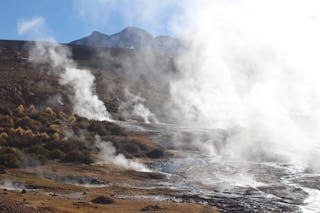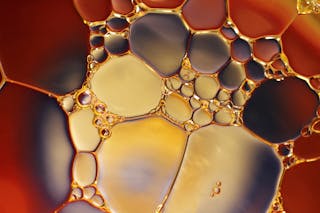
Keloids are a type of scar that can occur after an injury to the skin. They are raised and can be itchy or painful. Tea tree oil is an essential oil that has been used for centuries for its healing properties. It is thought to be able to help reduce the size of keloids and improve their appearance. There is some scientific evidence to support these claims, but more research is needed.
What is tea tree oil?
Tea tree oil is an essential oil that is extracted from the leaves of the tea tree. The tea tree is a native Australian tree and has been used for centuries by the Aboriginal people for its medicinal properties. Tea tree oil has a strong, antiseptic smell and is a pale yellow color. It is a popular essential oil and is used in a variety of ways.
Tea tree oil has a wide range of benefits and can be used to treat a variety of conditions. It is a natural antiseptic and antibacterial agent and can be used to treat wounds, skin infections, and acne. It can also be used as a natural cleaner and disinfectant. Tea tree oil can be used in a diffuser to help purify the air and eliminate airborne bacteria. It can also be added to laundry detergent to help disinfect and remove odors.
Tea tree oil is a safe and natural way to treat many common ailments and conditions. It is important to dilute tea tree oil before using it topically, as it can cause skin irritation in some people. Tea tree oil should not be ingested.
What are keloids?
Keloids are raised, red or purple scars that occur when the body produces too much of a protein called collagen during the healing process. Collagen is a major component of the skin's tissue. Keloids can form after any type of skin injury, including surgery, burns, cuts, scratches, and acne.
Keloids can be painful, itchy, and cause discomfort. They can also interfere with the function of joints and muscles. In some cases, keloids can restrict movement. Keloids can also affect a person's appearance and self-esteem.
People of any age can get keloids, but they are more common in young people. Keloids are more likely to occur in people with certain medical conditions, such as certain inherited disorders, diabetes, and HIV/AIDS. Keloids are also more common in people with darker skin tones.
There is no guaranteed way to prevent keloids. However, there are some things that may help reduce your risk, such as using silicone gel sheets or pressure dressings after surgery or injury, and avoiding tattooing and piercings.
If you develop a keloid, there are several treatment options available. These include steroid injections, laser surgery, and cryotherapy. Surgery to remove keloids is often not recommended because it can result in the formation of new keloids.
What causes keloids?
Keloids are a type of scar that can occur after an injury to the skin. They are raised and can be itchy or painful. Keloids can occur on any part of the body, but are most common on the chest, shoulders, and back.
There are a number of factors that may contribute to the development of keloids, including:
1) Family history. If you have a family member who has had keloids, you are more likely to develop them as well.
2) Ethnicity. People of African, Asian, or Hispanic descent are more likely to develop keloids.
3) Age. Keloids are more common in young people, although they can occur at any age.
4) Type of injury. Keloids are more likely to occur after injuries that result in a lot of skin inflammation, such as burns, chickenpox, or acne.
5) Location of injury. Keloids are more likely to occur on the chest, shoulders, or back, where the skin is thickest.
6) Treatment of injury. Keloids are more likely to occur if the injury is treated with steroids or other medications that lighten the skin.
If you are at risk for developing keloids, there are a few things you can do to prevent them, including:
1) Use silicone gel sheeting. This can help to reduce the risk of keloids after an injury.
2) Avoid injuries to the skin. If you do injure your skin, care for the wound carefully and avoid picking at the scab.
3) See a dermatologist. If you have a history of keloids, your dermatologist may be able to give you a corticosteroid injection to help prevent them from forming.
How can tea tree oil help reduce the appearance of keloids?
Tea tree oil is an essential oil that has a wide range of benefits. One of these benefits is the ability to help reduce the appearance of keloids. Keloids are a type of scarring that can occur after an injury to the skin. They are often raised and can be quite large. Tea tree oil can help to reduce the appearance of keloids by helping to improve the texture and appearance of the skin. It can also help to reduce inflammation and reduce the size of the keloid.
How do you apply tea tree oil to keloids?
There are many ways to apply tea tree oil to keloids. One way is to mix tea tree oil with a carrier oil, such as jojoba oil, and apply it directly to the keloid with a cotton ball. Another way is to make a compress by soaking a clean cloth in a mixture of tea tree oil and water, then applying it to the keloid for 20-30 minutes. You can also add tea tree oil to your favorite lotion or cream and apply it to the keloid daily.
If you have a keloid that is bothersome or painful, you can try applying tea tree oil several times a day. You may see some improvement within a few days, but it may take longer for the keloid to shrink. If you don't see any improvement after a few weeks, you can try mixing tea tree oil with another essential oil, such as lavender oil, which is known for its healing properties.
How often should you apply tea tree oil to keloids?
Keloids are a type of scar that can form following an injury to the skin. They are composed of extra collagen fibers that grow in response to the injury. Keloids can occur anywhere on the body, but are most common on the chest, shoulders, and back.
Tea tree oil is a natural antiseptic and has anti-inflammatory properties. It has been shown to be effective in the treatment of keloids. However, there is no consensus on how often tea tree oil should be applied to keloids.
Some experts recommend applying tea tree oil to keloids two to three times per day. Others recommend applying it once daily. And still others recommend applying it two to three times per week.
The frequency of application may depend on the size and severity of the keloid. It is important to consult with a dermatologist or other skin care expert to determine the best frequency of application for your individual situation.
What are the side effects of tea tree oil?
Tea tree oil is an essential oil that is distilled from the leaves of the tea tree (Melaleuca alternifolia), a native plant of Australia. It has been used as a traditional medicine by the Aboriginal people for centuries.
Tea tree oil has a wide range of uses and is commonly used to treat skin conditions, such as acne, eczema, psoriasis and dandruff. It is also an effective treatment for lice, nail fungus and fungal infections of the skin.
The main compounds in tea tree oil are terpinen-4-ol and cineole. These compounds give tea tree oil its antimicrobial and anti-inflammatory properties.
Tea tree oil is generally safe to use, but it can cause side effects in some people. The most common side effects are skin irritation and contact dermatitis.
Skin irritation
Tea tree oil can cause skin irritation in some people. This is more likely to occur if the oil is used undiluted or if it is applied to broken or sensitive skin.
If you experience skin irritation after using tea tree oil, try using a lower concentration of oil or diluting it with a carrier oil, such as jojoba oil or coconut oil. You can also try using the oil less frequently.
Contact dermatitis
Contact dermatitis is a type of skin inflammation that can occur after contact with an irritant, such as an allergen or an irritant chemical.
Symptoms of contact dermatitis include redness, itching, swelling and blistering of the skin. If you experience these symptoms after using tea tree oil, stop using the oil and seek medical advice.
Allergic reactions
Allergic reactions to tea tree oil are rare but they can occur. Symptoms of an allergic reaction include rash, itching, swelling of the face, lips or tongue, difficulty breathing and dizziness.
If you experience these symptoms after using tea tree oil, stop using the oil and seek immediate medical attention.
Side effects of tea tree oil are rare but can occur in some people. If you experience any side effects, stop using the oil and seek medical advice.
Is tea tree oil safe for all skin types?
Tea tree oil is an essential oil that is extracted from the leaves of the tea tree. The oil has a fresh, earthy aroma and is a pale yellow color. It is a popular ingredient in many skin care products because it is thought to be a natural antiseptic and disinfectant. Tea tree oil is also used to treat acne and other skin conditions.
There is some controversy surrounding tea tree oil and its safety. Some people believe that tea tree oil can cause skin irritation, inflammation, and allergic reactions. There is also a concern that tea tree oil may interact with other medications that are applied to the skin.
Despite these concerns, tea tree oil is generally considered safe for most people to use. If you are concerned about a possible reaction, it is best to patch test the oil on a small area of skin before using it more broadly. As with any essential oil, it is important to dilute tea tree oil before applying it to the skin. This can be done by adding a few drops of oil to a carrier oil, such as jojoba or coconut oil.
How long does it take for tea tree oil to work on keloids?
First, it is important to note that there is no definitive answer to this question as each individual's response to tea tree oil may vary. In general, however, it is thought that tea tree oil may help to reduce the size and appearance of keloids over time with regular use.
Keloids are raised scars that can occur after injuries or surgery to the skin. They are more likely to develop in people with darker skin tones, and tend to be larger and more visible than other types of scars. Keloids can be very unsightly and can cause feelings of self-consciousness or embarrassment.
While there is no cure for keloids, there are treatments that can help to reduce their size and improve their appearance. One option is to use tea tree oil on the affected area.
Tea tree oil is an essential oil that is derived from the leaves of the tea tree plant. It has been used for centuries for its medicinal properties, and is thought to have antiseptic, anti-inflammatory, and antimicrobial effects.
Some people believe that applying tea tree oil to keloids can help to reduce their size and improve their appearance over time. There is no scientific evidence to support this claim, but it is thought that the oil's anti-inflammatory properties may help to reduce swelling and redness.
To use tea tree oil for keloids, it is generally diluted with water or another carrier oil and then applied to the affected area. It is important to note that tea tree oil can cause skin irritation in some people, so it is important to test it on a small area first before using it more broadly.
It is also important to be patient when using tea tree oil for keloids, as it may take several weeks or longer to see any results. Regular application is generally necessary to see any benefit.
If you are considering using tea tree oil for your keloids, it is important to speak with your doctor first to ensure that it is safe for you to do so.
Frequently Asked Questions
How to get rid of a keloid with tea tree oil?
Warm the water and salt until it dissolves. Dip a cotton pad in this solution and tape it on the affected area. Let the keloid soak for about 5 minutes. Remove the cotton pad and apply diluted tea tree oil.
How to get rid of keloid scars?
There are many methods that can be used to treat keloid scars. The most effective treatment is usually a combination of therapies that include surgery, topical medications, and radiation therapy.
How to get rid of keloids with sea salt?
The remedy combines tea tree oil, an antibacterial agent, and sea salt. To make the treatment effective, soak your keloid in a solution of 2-3 drops of tea tree oil and ½ tsp. of sea salt for 10-15 minutes each day.
How do you get rid of a keloid on Your Lip?
There is no one-size-fits-all answer to this question, as the methods that work for one person may not work for another. However, some tips on how to get rid of a keloid on Your Lip might include applying a topical cream or ointment that includes both tea tree oil and lavender essential oil, using heating pads on an occasional basis, and seeking out professional medical help.
How to use tea tree oil and vitamin E for keloids?
Step 1: Mix equal parts of tea tree oil and vitamin E oil. Step 2:Take a sterile cotton swab and dip it in the mixture. Step 3:Drain excess oil and apply on the affected area. Step 4:Repetitions as necessary to treat the keloids.



